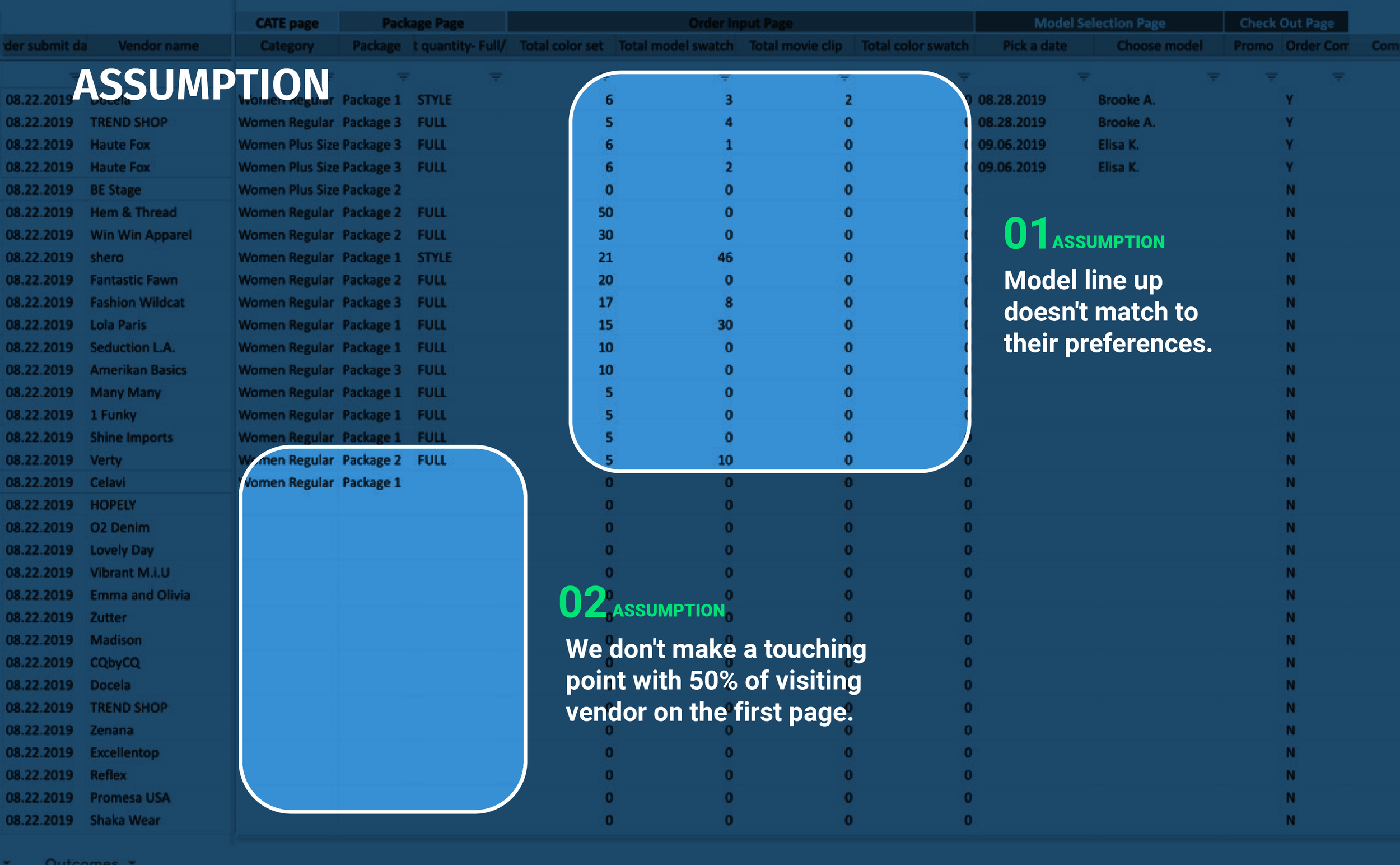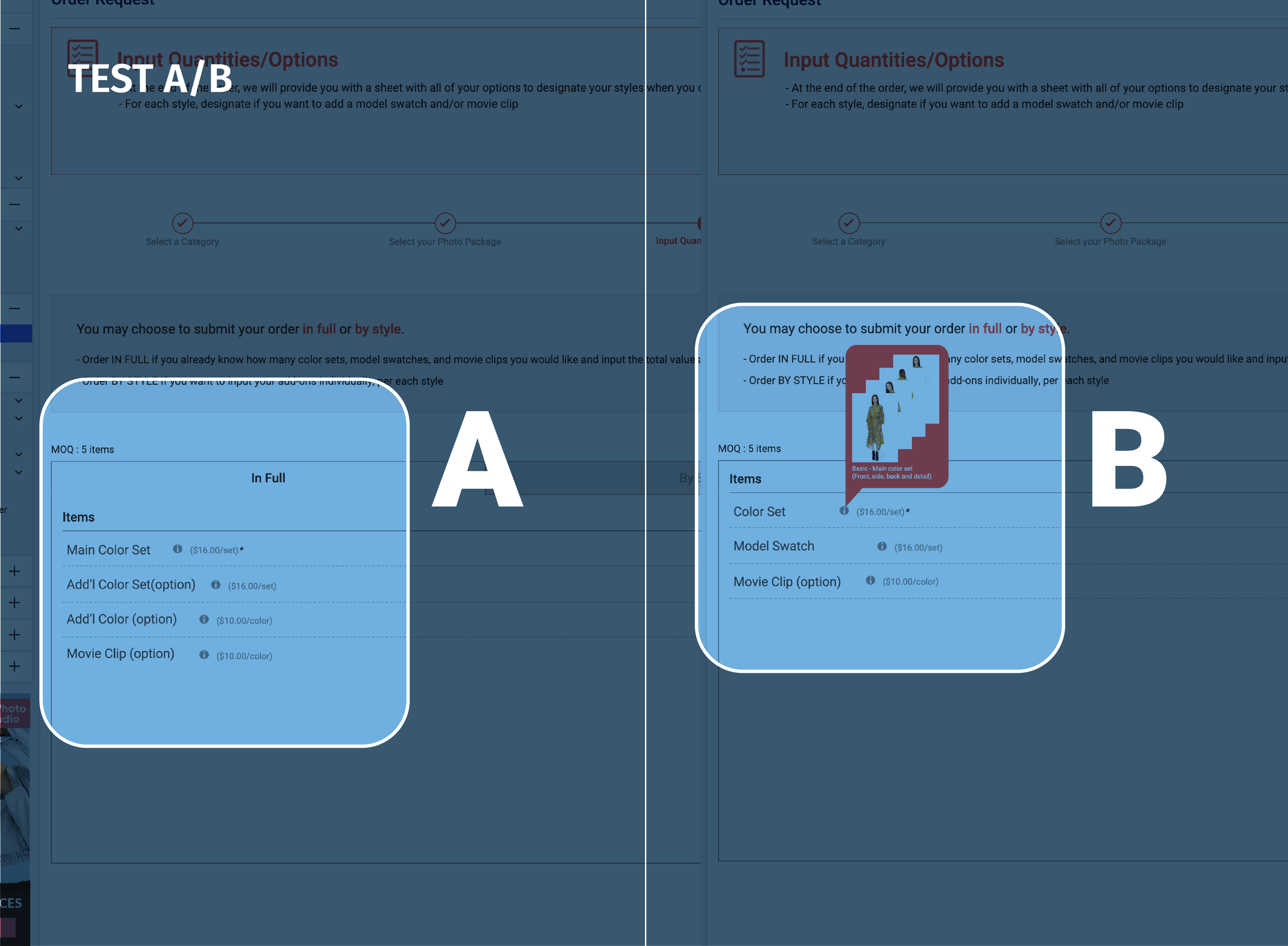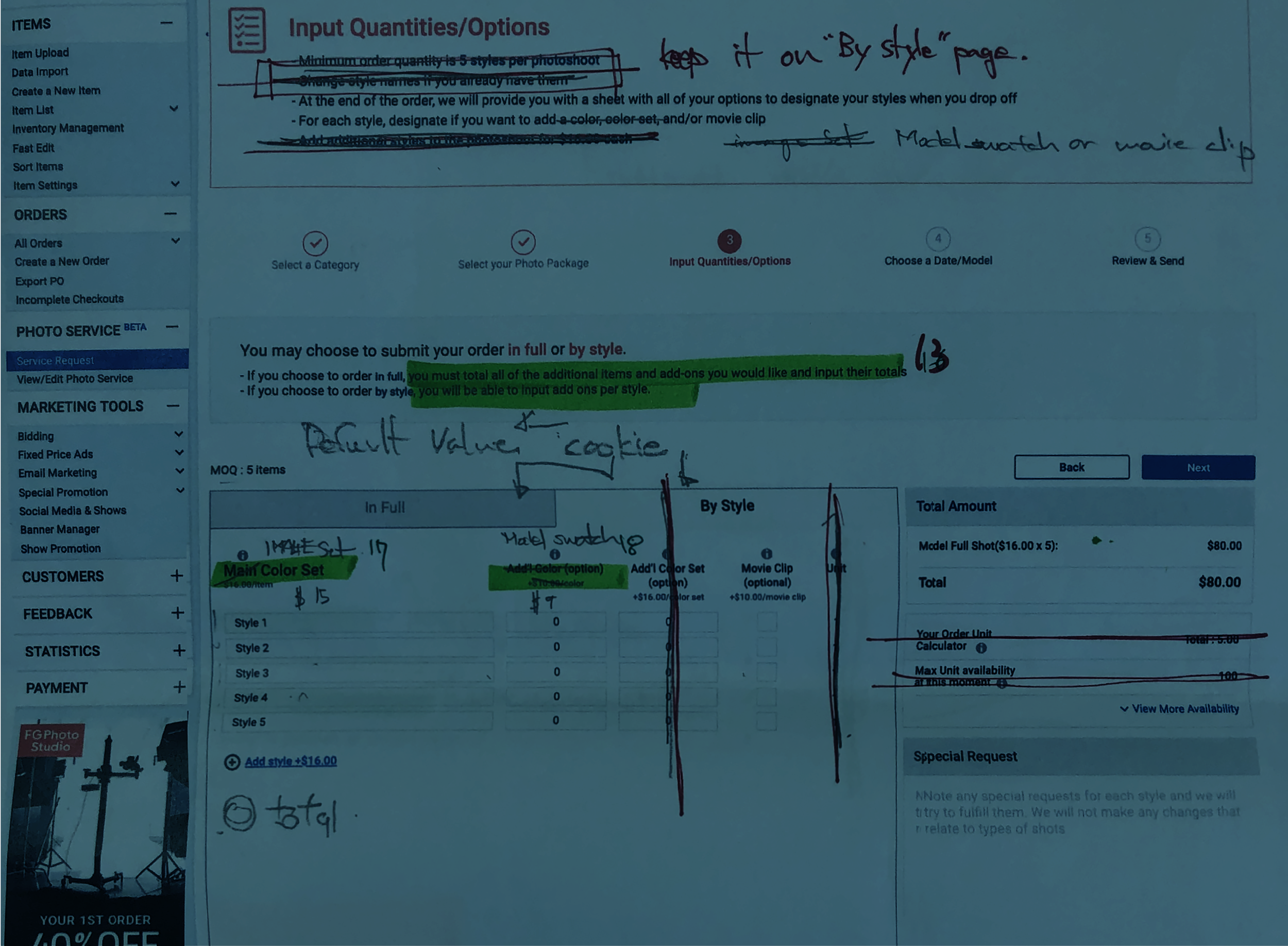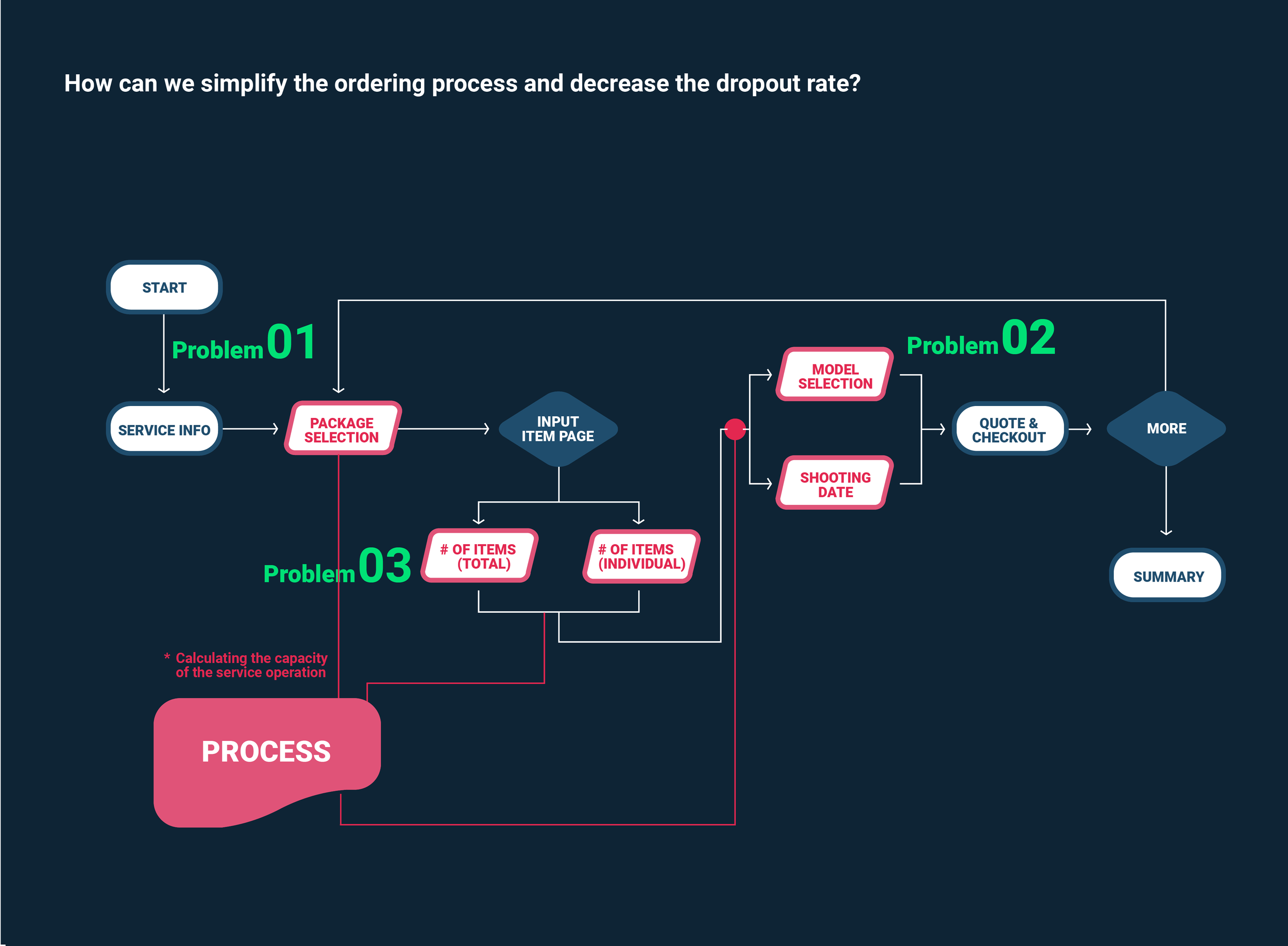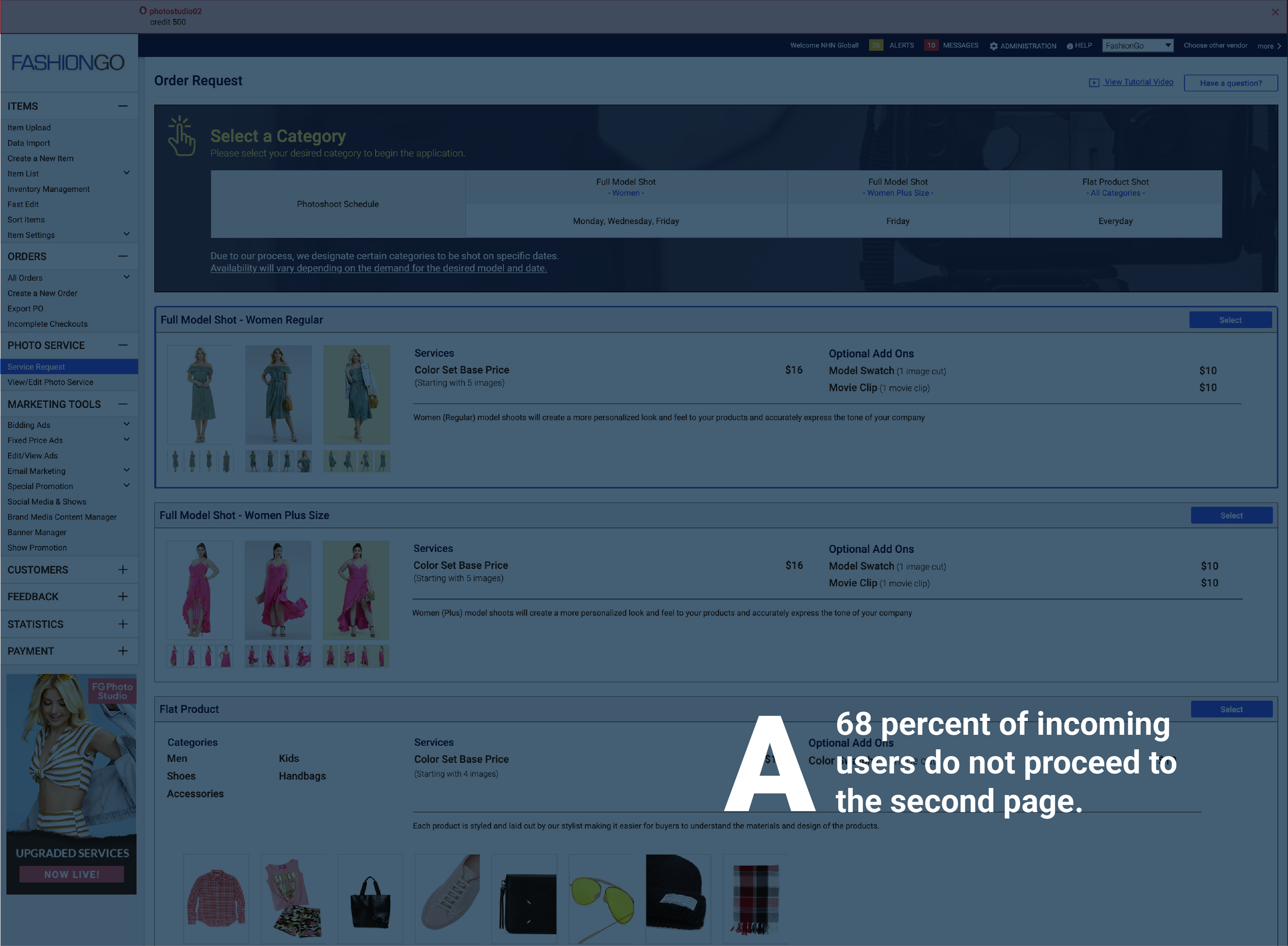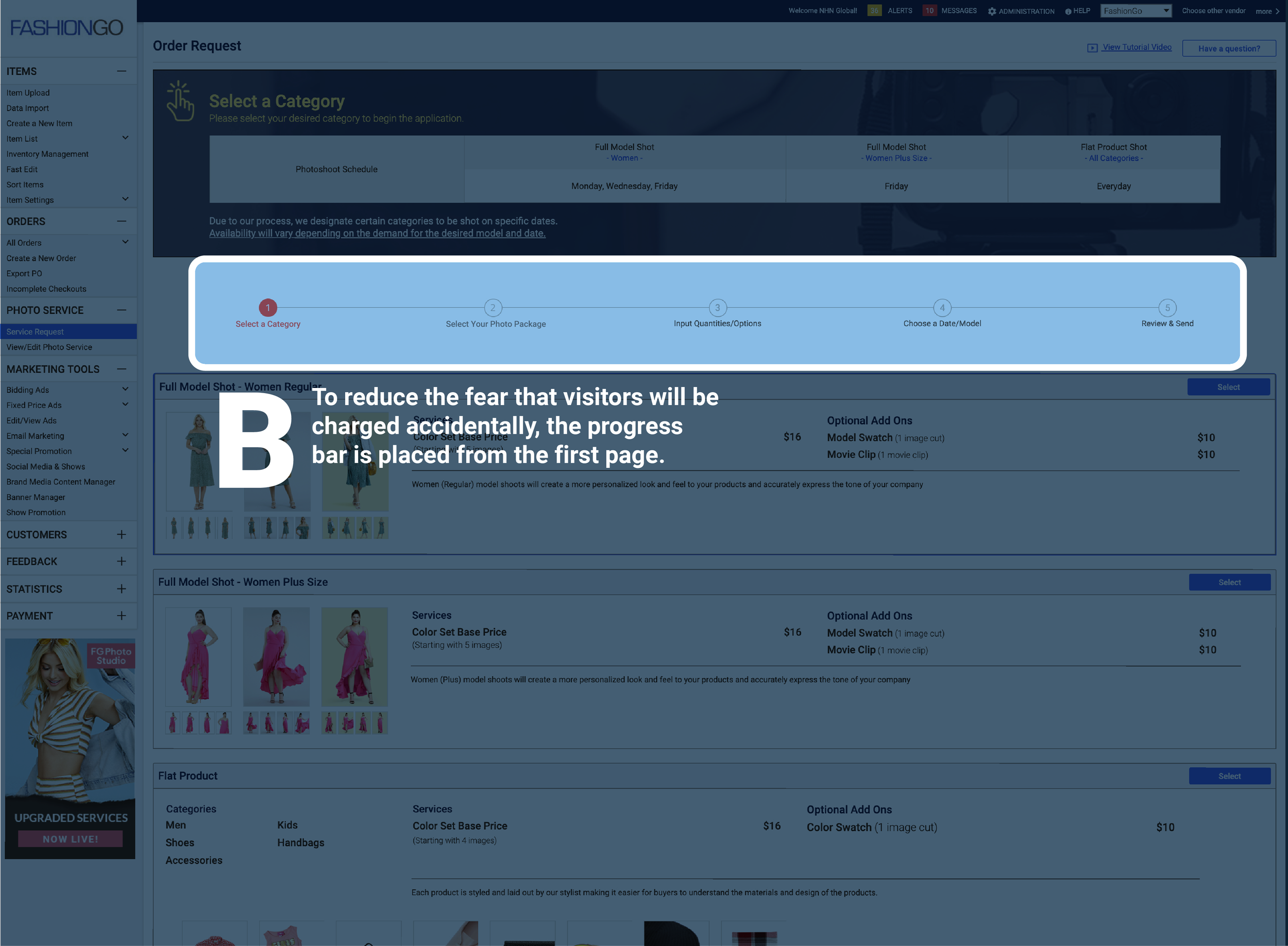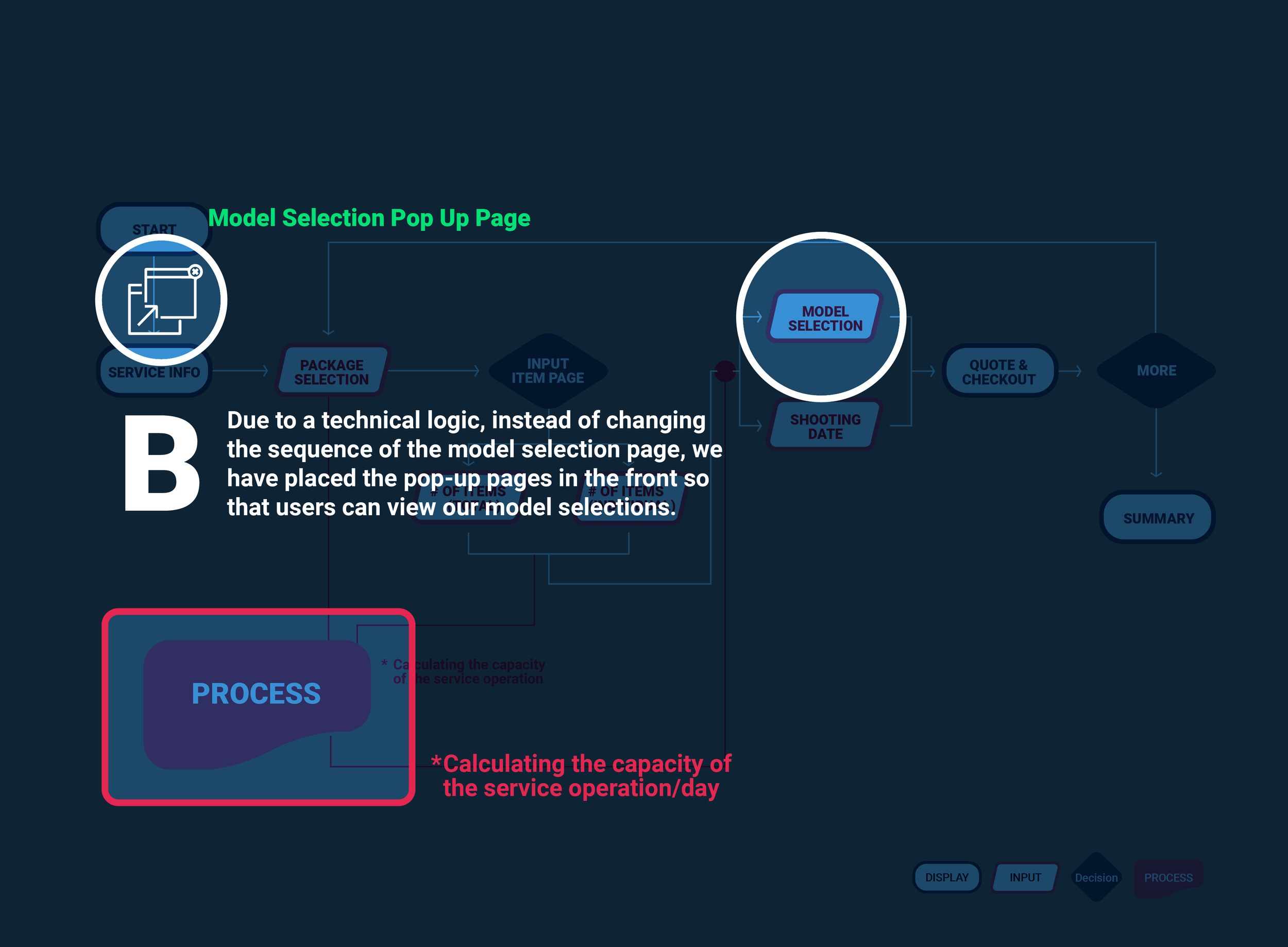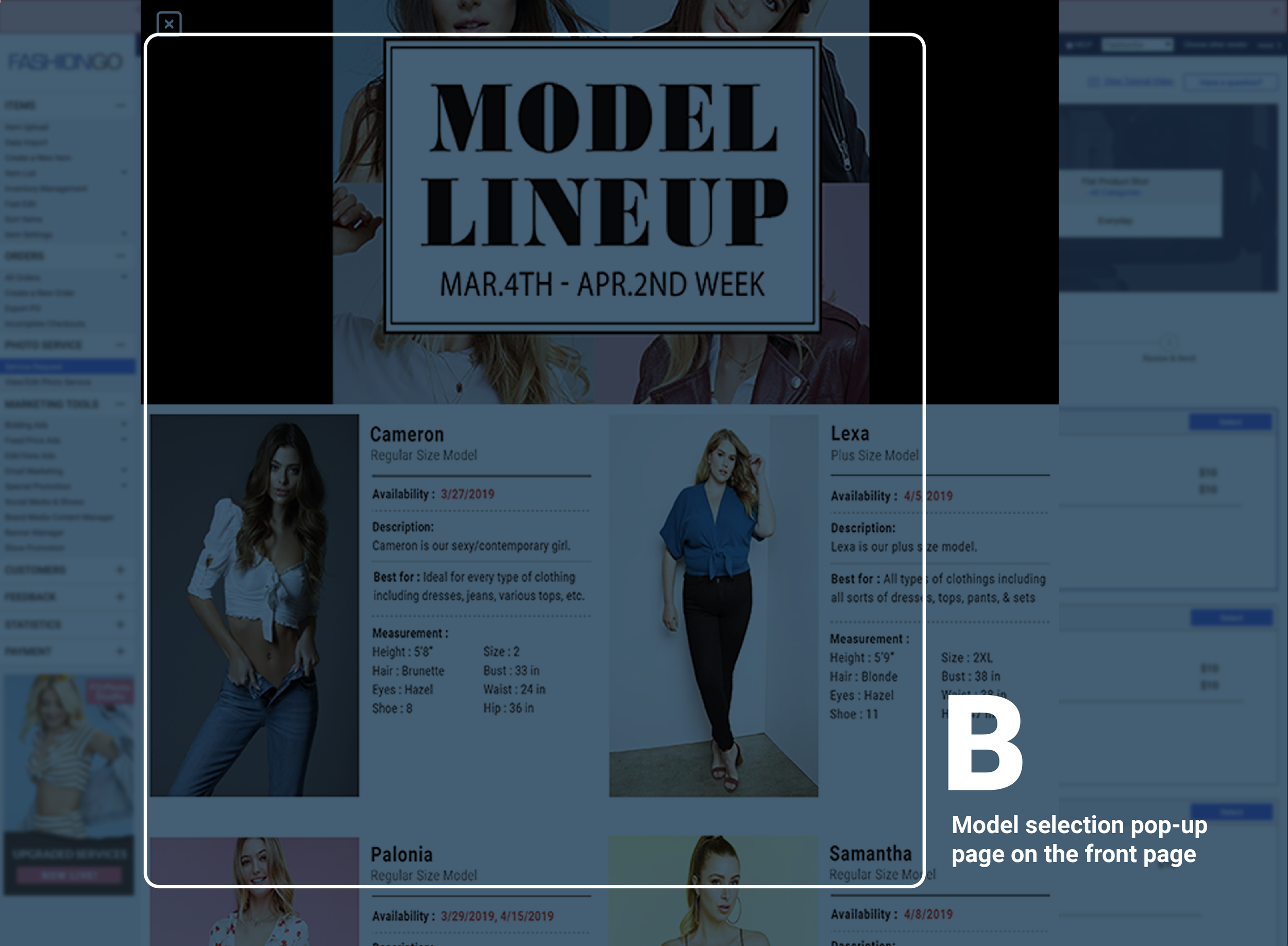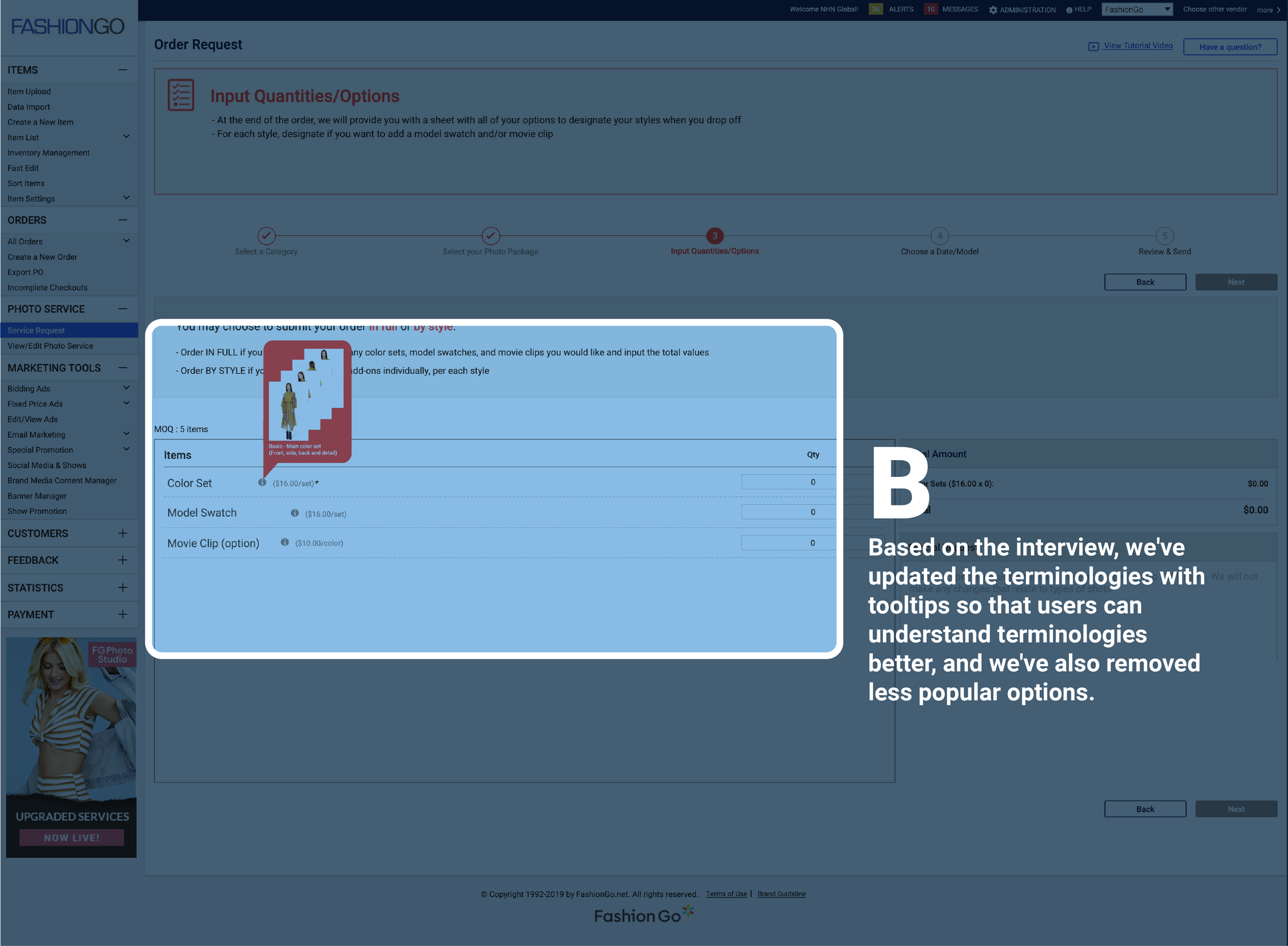FASHIONGO PHOTOSTUDIO
SERVICE - A/B TEST
"How can we simplify the service ordering process
and clarify the terminology for users?"
A/B TEST
As online photography service ordering was a new concept in the market, our main challenge was educating customers on terminology, package options, and delivery methods. During a six-month beta period, we closely monitored button activity and page dropout rates. This data helped us form assumptions, which we validated through customer interviews.
PROBLEM
In response to user feedback, we reorganized the information hierarchy and highlighted key elements of our photography service to better meet client needs. To streamline the ordering process, we added tooltips with image descriptions to clarify terms and removed unnecessary options. Additionally, we introduced a service dashboard on the homepage, featuring model selection—a top priority for customers—along with a progress bar to guide users through each page, enhancing engagement.
SOLUTION
TACTICS
ROLE & RESPONSIBILITIES
As the project owner, I anticipated initial challenges in introducing our service. To address this, I developed a minimum viable product (MVP) and implemented a basic analytics system to monitor user interactions during the ordering process, tracking button traffic and page dropout rates.
Using this data, I formulated assumptions and validated them through interviews. These insights helped shape hypotheses and guide our strategies. By continuously analyzing the data, we iteratively improved the service to enhance usability and better engage potential customers.
Since online ordering of photo studio services was a novel concept, our primary challenge was simplifying the process for users. During the six-month beta period, we received numerous inquiries from sellers and found that our terminology and descriptions were unclear. Using the measurement system we developed, we made assumptions about user behavior and conducted A/B tests to improve clarity and usability.
BACKGROUND & CHALLENGE
GOAL
"How can we improve the clarity of our terminology and descriptions to increase the order conversion rate?"
The enhancements led to a decrease in bounce rates due to clearer information presentation. Additionally, the operations team saw a reduced workload as the need to explain the service diminished. Moreover, the improvements resulted in an expanded user base and attracted new users.
OUTCOMES
01
PROBLEM
ASSUMPTION
"On the first page, there must be an entry barrier that prevents users from moving to the next page."
User interviews revealed that some users were concerned about being accidentally charged just by visiting the service, which discouraged them from exploring beyond the first page.
"About 60% of incoming users leave the site after visiting the first landing page."
HYPOTHESIS
"By embedding progress status bars starting from the first page, users are more likely to explore the service and check the quotation of their order."
A progress bar was placed at the top of each page, starting from the first, with each step tagged by a short sentence guiding users on what to do and how many steps remained until the checkout page.
RESULT
"The conversion rate increased by approximately 22% between the first and second pages."
A progress bar at the top of each page, starting from the first, helped reduce the entry barrier, encouraging visitors to explore the service further. Brief, informative sentences at each step also guided users, helping them understand the process and how many steps remained until checkout, making the user journey more efficient and convenient.
02
PROBLEM
“The Number of Incoming New Users To FG Photo Studio Service Are Not Enough.”
HYPOTHESIS
"By changing the ordering sequence and placing the model selection page first, new users are more likely to explore the ordering process through to the quotation page."
Initially, we planned to start the order sequence with the model selection page, but faced a technical issue calculating our operations team's capacity for specific dates. After inputting the number of items to be photographed, model availability and dates were displayed based on order size. As an alternative, we emailed a list of monthly models and simplified the process by removing unnecessary options to guide visitors to the model selection page more quickly.
RESULT
"The number of incoming users (new session views)
increased by 15%."
Marketing our service through our model selections resulted in a 15% increase in new visitors to the service.
03
PROBLEM
ASSUMPTION
"From our interviews with vendors, we learned that the most important factor when choosing a photo studio service is model selection."
Vendors seek models who can embody their brand or product. While we anticipated that service delivery times and model selection would be key priorities, we didn’t realize that model selection would be the single most important factor for vendors when choosing a photo studio service.
“Customers are complaining that the service
deliveries aren't what they expected.”
HYPOTHESIS
"By simplifying the terminologies and adding visual aids to tooltips, sellers will better understand the service deliveries, leading to fewer complaints."
During the six-month beta period, we tracked traffic on each option to identify which were less used and which were essential. By removing less popular options and focusing on the most important ones, we enhanced tooltip explanations with image aids, improving clarity and usability.
RESULT
"Order success rate increased by approximately
18% in a month."
"Operational capacity improved as the number
of complaints decreased."
By removing unnecessary options, the ordering process was simplified, leading to an overall increase in the order conversion rate and a reduced workload for the operations team.
ASSUMPTION
"Our terminologies used to regulate service options are not clear enough to customers."
In the first six months of our beta service, we received numerous complaints that the service deliveries, particularly the number of images, didn’t match our descriptions. After interviewing sellers, we realized some terminologies—such as photo shooting angles, additional shooting options, image sets, and package styles—were potentially misleading.
